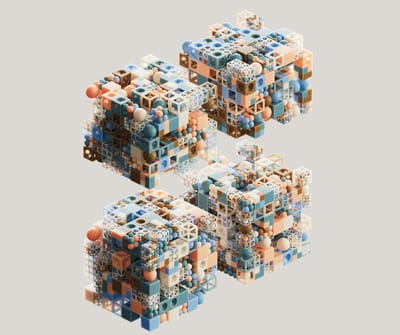
Why They’re Hard, How They Succeed, and What Actually Makes the Difference
There’s this old myth in tech that if you put smart engineers, thoughtful designers, and a sharp product manager into the same room, a good product will naturally follow. Reality is messier. Teams aren’t machines. They’re more like ecosystems, and they don’t thrive automatically. Trust doesn’t come built-in. Momentum can disappear overnight. Some teams click early, almost by accident. They fight about the right things, catch each other’s blind spots, and build on rough ideas before they get polished. Other teams, even when they’re stacked with talent, never quite get there. Meetings run in circles. Ownership feels fuzzy. Work gets delivered, but nobody’s proud of it. And eventually, the team wears itself down, exhausted without even knowing exactly why.
Today, understanding this difference isn’t optional anymore. Cross-functional collaboration isn’t just trendy jargon. It’s the only real way teams are building anything serious now. But the ground keeps shifting. We work across time zones more than we don’t. Most teams depend on tools that didn’t even exist a few years ago. AI sits in the background, suggesting pull requests, organizing product notes, nudging designs into new shapes. Org charts have flattened. Titles still exist, but they don’t carry the same weight they used to. Leadership is starting to look more like influence than position. The habits that made teams great in 2015, even 2020, don’t always land today. Worse, they might backfire if we aren’t careful.
To really thrive now, just being good at your role isn’t enough. It’s about moving between disciplines without stepping on toes, pulling in the right people at the right moments without formal authority, pushing for clarity when it would be easier to let confusion slide. Whether you’re an engineer, a designer, a product lead, or somewhere floating between all three, the game has changed. You have to meet at the messy edges where the roles overlap, because that’s where the real work happens. That’s where teams either break apart, or build something worth finishing.
…even when they’re stacked with talent, never quite get there. Meetings run in circles. Ownership feels fuzzy. Work gets delivered, but nobody’s proud of it. And eventually, the team wears itself down, exhausted without even knowing exactly why.
Where Cross-Functional Collaboration Came From
Cross-functional teams weren’t invented because someone thought it sounded nice on a poster. They came out of frustration. Real, bitter frustration with how slow and broken product development used to be.
Back in the 90s and early 2000s, most companies ran on waterfall. You had requirements dumped into a giant document. Then it got handed to designers who vanished for weeks to make wireframes. Then it got tossed over the wall to developers, who built what they understood from whatever scraps they got. By the time the thing finally shipped. If it shipped at all. Nobody even remembered what the customer actually needed anymore. If users hated it, too bad. Maybe you’d fix it in version two. Maybe not.
It’s easy to look back and laugh, but a lot of careers were quietly suffocated by that process. Engineers who knew things wouldn’t work but couldn’t say anything. Designers who watched their best ideas die the minute they hit a Gantt chart. PMs stuck managing spreadsheets of risk that nobody really wanted to solve.
Agile was supposed to fix all that. In theory, small, cross-functional teams could own their work end-to-end. Developers, designers, PMs, even QA. Sitting together, talking daily, shipping tiny slices fast. No more giant handoffs. No more assumptions piling up.
And when it worked, it really worked. Teams got tighter. Users actually got heard. Products got better, faster. That’s why the idea of cross-functional teams became gospel. It wasn’t just a fad. It was a survival tactic.
But, and this part doesn’t get talked about enough. Cross-functionality also revealed just how hard real collaboration is.
It’s easy to sit in a room with people who think exactly like you. It’s another thing to sit next to someone who sees the world differently, who questions your assumptions, who doesn’t speak your technical shorthand. Cross-functional teams broke down the walls, but they also exposed the friction underneath. And honestly? A lot of teams just papered over that tension instead of dealing with it. They held the ceremonies, the standups, the syncs, the demos, the retros, but underneath, different functions still operated like mini kingdoms.
The best teams figured out early that working cross-functionally isn’t about putting different roles on the same video conference call. It’s about really doing the hard work of thinking together. Making tradeoffs together. Carrying wins and failures together.
It’s messy. It’s never as clean as the diagrams in the Agile books. But it’s the mess, if handled right, that actually makes teams stronger than the sum of their parts.
…nobody wants five layers of sign-offs anymore. Teams today expect a huge amount of autonomy. Sometimes more than they’re ready for. Titles still exist, sure, but influence has overtaken authority. The engineer who builds trust across disciplines often ends up steering technical decisions. The designer who can explain business tradeoffs earns more product input than their “rank” says they should have. The PM who just pushes tasks around without owning outcomes? They quietly lose ground, even if their title sounds impressive on LinkedIn.
What Working Together Really Means Today
Today, nobody argues about whether cross-functional teams are “worth it” anymore. It’s just the way the real work gets done.
But the ground rules are different now. Honestly, a lot harder for teams that aren’t paying attention.
Nobody wants five layers of sign-offs anymore.
First, most teams don’t work in the same room, or even the same timezone, and they haven’t for a while. The dream of everyone whiteboarding together in one place has been replaced by something messier, updates flying across Slack channels, Notion or Confluence pages half-updated in one country while another team’s uploading Figma files in another. Work happens asynchronously now, because it has to.
Async isn’t just about sending status updates at odd hours. It forces a deeper kind of discipline. You can’t rely on real-time conversation to cover gaps anymore. You have to write clearly, document decisions properly, design updates that speak for themselves even when you’re asleep and your teammate’s picking them up. Every piece of work is also a message to someone else: “Here’s what we decided. Here’s what’s left. Here’s what’s unclear. Here’s what matters.”
The teams that get this right move faster, not slower. They don’t wait around for meetings that may never happen. They leave a trail smart enough that any new designer, developer, or PM could walk into the project cold and know what to do by the end of the day. It’s not glamorous. It’s just operational hygiene. But it separates teams that ship from teams that drift.
Meanwhile, AI isn’t something teams are “trying out” anymore. It’s fully in the loop. At first, it was assistants drafting Jira tickets, summarizing meeting notes, cleaning up messy Figma layers. Now it’s suggesting architecture diagrams, drafting SQL queries, even nudging design iterations based on pattern libraries it’s learned.
It’s not replacing the hard thinking. Not yet.
But it’s speeding up the groundwork so the hard thinking happens faster. A lot of what used to bog people down, repetitive project updates, documentation busywork, first-pass code that gets handed off to tools that don’t get tired or distracted.
The real twist? Teams that treat AI like a junior teammate, giving it structure and feedback, are pulling ahead. Teams that treat AI like some magical oracle, or worse, ignore it, are already falling behind.
Organizational structures have shifted too. Nobody wants five layers of sign-offs anymore. Teams today expect a huge amount of autonomy. Sometimes more than they’re ready for. Titles still exist, sure, but influence has overtaken authority. The engineer who builds trust across disciplines often ends up steering technical decisions. The designer who can explain business tradeoffs earns more product input than their “rank” says they should have. The PM who just pushes tasks around without owning outcomes? They quietly lose ground, even if their title sounds impressive on LinkedIn.
Being cross-functional in 2025 isn’t about what’s on your resume.
It’s about how you show up inside the mess:
- Can you move between roles enough to understand what’s actually at stake?
- Can you make things clearer for the team instead of adding more noise?
- Can you lead when nobody’s handing you the microphone?
That’s the real game now. And the teams that figure it out don’t just deliver better work. They do it without burning each other out in the process.
Where Cross-Functional Teams Are Headed Next
If the last few years taught us anything, it is that collaboration will keep getting messier, not cleaner. And the teams that survive are not the ones trying to optimize the chaos with more dashboards or stand-ups. They’re the ones learning how to ride it, like surfers who know you can’t control the wave, only how you move inside it.
It is not crazy to imagine that by 2030, every cross-functional squad will have an AI operations manager built into their workflow, quietly pushing things forward behind the scenes.
Looking ahead, it is becoming clear that cross-functional teams will not just be groups inside one company anymore. More and more, they will form loose networks made up of engineers, designers, PMs, and analysts. Some will be in-house, some contractors, some coming from partner companies, and some from platforms we have not even named yet. A project might pull together a product designer from Cluj, a back-end development team out of Malaysia, and a freelance PM in Berlin. Nobody will blink. It will just be Tuesday.
That shift demands a different kind of team literacy.
Collaboration today is no longer just about pushing code or pixels. It is about building trust at speed.
You might only be on a project with someone for six months, maybe less. There is no time for the slow dance of figuring out if they know what they are doing. You have to assume competence and move until proven otherwise. And you have to be skilled at signaling your own reliability, fast. Not with job titles or long intros, but through how you show up, the clarity of your communication, the ownership you take, the consistency you bring to messy situations.
Meanwhile, AI’s role will expand dramatically beyond assisting with basic tasks. It’s moving toward actively orchestrating team workflows. Within a few years, expect AI operations managers embedded directly into teams. Quietly predicting bottlenecks before they occur, proactively adjusting sprint priorities based on real-time data, and even identifying team dynamics that humans might overlook.
That changes the game for human team members too. If AI handles the administrative gravity, the constant pulling-together of work, then humans will have to lean even harder into the things AI cannot do: strategic judgment under uncertainty, conflict resolution between strong-willed people, and true creative leaps that data patterns do not predict.
The irony is that as AI gets better at mechanical collaboration, human collaboration has to get sharper too. Not more polished or procedural, but more aware, more alive, and more willing to wrestle with the real tensions between disciplines instead of papering them over.
Beyond that, collaboration will likely move into even stranger spaces. Virtual reality design rooms where remote teams can whiteboard together as if standing in the same room. Decentralized autonomous organizations spinning up micro-teams without traditional employment contracts. Cross-functional teams stitched together ad hoc around common problems instead of company brands.
If that sounds wild, it is. But the seeds are already there.
And the teams that thrive will not be the ones with the flashiest collaboration tools. They’ll be the ones that know how to build real momentum across difference. Fast and without needing permission.
How to Actually Work Well Across Roles
…if you are not solving something meaningful for the user, all the technical brilliance and creative flair in the world will not save the product.
It sounds obvious when you say it out loud, but a lot of smart people still miss it. Being good at your craft is not enough on a cross-functional team. Not anymore.
You can be a brilliant engineer, a gifted designer, a razor-sharp PM. But it does not matter much if you cannot stretch past your comfort zone, translate your thinking to other disciplines, and help the whole team stay aimed at the same thing.
The best players on cross-functional teams are the ones who know how to move between worlds without getting lost.
It starts by remembering what the center of the work actually is. Not the backlog, not the roadmap, not the metrics, but THE USER.
When things get complicated, or tensions get tight, strong teams know how to anchor back to the user’s experience. Not because it sounds nice, but because it forces everyone, the designer, engineer, the PM to talk about the same thing. The thing that matters the most.
You can argue about implementation, or prioritization, or aesthetics. But if you are not solving something meaningful for the user, all the technical brilliance and creative flair in the world will not save the product.
The second habit is just as basic and just as rare: relentless, thoughtful communication.
Not flooding Slack. Not holding a hundred meetings. Actual communication, sharing context early, making uncertainty visible instead of hiding it, asking the second question instead of pretending you already understand.
Real cross-functional collaboration happens in those small moments when someone says, “Hang on, let me walk you through the tradeoffs here,” instead of assuming everyone will just figure it out later.
It feels slower at first. It feels heavier. But teams that invest early in building shared context move faster when it actually counts.
Because when it comes time to sprint, nobody is guessing what matters. Nobody is sitting in their silo, waiting to be told what to do.
Trust is not something you declare. It is something you earn in layers. By delivering when you say you will, admitting when you are stuck before it becomes someone else’s crisis, and taking care with the pieces of work that get handed to you, even when they are rough, even when they are late. Yes, extreme ownership.
In a cross-functional team, it is the small signals of reliability that add up. Until one day the team moves like a single organism without needing to check every little thing. Or it does not, because trust was never really built, and every decision turns into a negotiation.
The last piece is the hardest and the most important: resilience inside ambiguity.
No matter how well a team plans, real-world work drifts. Timelines shift, new information breaks old assumptions, leadership priorities change halfway through a sprint.
It is tempting, in those moments, to retreat into your discipline and say, “Well, I built what was on the ticket” or “Design handed it off, so it is not my problem anymore.”
But great cross-functional players do not think that way. They stay connected to the bigger picture even when the immediate details get messy. They know when to step forward, when to recalibrate, when to push for clarity even if it means slowing down for a minute.
They do not panic when the plan bends. They adapt while holding the mission steady.
That is the work. It is not neat. It is not easy. And it is the reason why real cross-functional collaboration is still a competitive advantage. Even after twenty years of people saying it should be table stakes by now.
Most teams still struggle with it. Most companies still do not reward it properly.
But the ones who figure it out. The ones who move seamlessly between disciplines, who build shared understanding as naturally as they write code or ship designs. Those are the teams that win. Not just in the quarterly numbers, but in the trust they build, the products they launch, and the careers they accelerate without even having to play politics.
Cross-functional excellence is not a process you install. It is a craft you practice.
The best teams know that.
The best players know that.
Everyone else is just hoping for luck.
Timeless Principles That Survive Any Trend
The tools will keep changing. The structures will keep shifting. The jargon will keep updating itself every few years to make old ideas sound new again. But the real work of being great in a cross-functional team stays the same.
It is not about memorizing a new framework or downloading the latest template. It is about showing up every day ready to make other people’s work better. Not by being louder or taking over, but by moving across boundaries with clarity, with empathy, and with a stubborn commitment to the outcome the team is chasing.
You focus on the user, even when the politics inside the room get noisy.
You communicate early. Not perfectly, but honestly.
You build trust the way anything worth building is built, layer by layer, through action, not TALK.
You stay flexible when the ground shifts under you, because it always will.
Maybe most important, you understand that the best cross-functional players are not the ones who know everything. They’re the ones who stay curious.
Curious about what good looks like in a different discipline, curious about how someone else’s constraints could sharpen their own thinking instead of blocking it, curious enough to keep asking better questions, long after other people have given up.
The teams that thrive five years from now, ten years from now, are not going to be the ones with the biggest budgets or the fanciest AI workflows. They’re going to be the ones full of people who know how to move between craft, context, and collaboration without getting stuck in one shape.
The best cross-functional teams feel less like structures and more like ecosystems. Alive, resilient, able to take a hit, adapt, and still move forward because the relationships inside are stronger than the chaos outside.
If you can build that way, if you can work that way, you are not just ready for 2025.
You are ready for whatever comes next.
Enjoyed this piece?
If this piece was helpful or resonated with you, you can support my work by buying me a Coffee!

Become a subscriber receive the latest updates in your inbox.






Member discussion